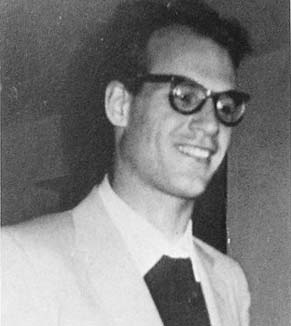


 تاريخ الرياضيات
تاريخ الرياضيات
 الرياضيات في الحضارات المختلفة
الرياضيات في الحضارات المختلفة 
 الرياضيات المتقطعة
الرياضيات المتقطعة
 الجبر
الجبر
 الهندسة
الهندسة 
 المعادلات التفاضلية و التكاملية
المعادلات التفاضلية و التكاملية 
 التحليل
التحليل
 علماء الرياضيات
علماء الرياضيات |
Read More
Date: 25-2-2018
Date: 25-2-2018
Date: 20-2-2018
|
Born: 28 March 1928 in Berlin, Germany

Alexander Grothendieck's father was Russian and he was murdered by the Nazis. Grothendieck moved to France in 1941 and later entered Montpellier University. After graduating from Montpellier he spent the year 1948-49 at the École Normale Supérieure in Paris.
In 1949 Grothendieck moved to the University of Nancy where he worked on functional analysis with Dieudonné. He became one of the Bourbaki group of mathematicians which included Weil, Henri Cartan and Dieudonné. He presented his doctoral thesis Produits tensoriels topologiques et espaces nucléaires.
Grothendieck spent the years 1953-55 at the University of São Paulo and then he spent the following year at the University of Kansas. However it was during this period that his research interests changed and they moved towards topology and geometry.
In fact during this period Grothendieck had been supported by the Centre National de la Recherche Scientifique, the support beginning in 1950. After leaving Kansas in 1956 he therefore returned to the Centre National de la Recherche Scientifique. However in 1959 he was offered a chair in the newly formed Institut des Hautes Études Scientifiques which he accepted. In [2] the next period in Grothendieck's career is described as follows:-
It is no exaggeration to speak of Grothendieck's years 1959-70 at the IHES as a 'Golden Age', during which a whole new school of mathematics flourished under Grothendieck's charismatic leadership. Grothendieck's Séminaire de Géométrie Algébrique established the IHES as a world centre of algebraic geometry, and him as its driving force. He received the Fields Medal in 1966. In looking back at this period, one marvels at the generosity with which Grothendieck shared his ideas with colleagues and students, the energy he and his collaborators devoted to meticulous redaction, the excitement with which they set out to explore a new land.
During this period Grothendieck's work provided unifying themes in geometry, number theory, topology and complex analysis. He introduced the theory of schemes in the 1960s which allowed certain of Weil's number theory conjectures to be solved. He worked on the theory of topoi which are highly relevant to mathematical logic. He gave an algebraic proof of the Riemann-Roch theorem. He provided an algebraic definition of the fundamental group of a curve.
Again quoting from [2]:-
The mere enumeration of Grothendieck's best known contributions is overwhelming: topological tensor products and nuclear spaces, sheaf cohomology as derived functors, schemes, K-theory and Grothendieck-Riemann-Roch, the emphasis on working relative to a base, defining and constructing geometric objects via the functors they are to represent, fibred categories and descent, stacks, Grothendieck topologies (sites) and topoi, derived categories, formalisms of local and global duality (the 'six operations'), étale cohomology and the cohomological interpretation of L-functions, crystalline cohomology, 'standard conjectures', motives and the 'yoga of weights', tensor categories and motivic Galois groups. It is difficult to imagine that they all sprang from a single mind.
Grothendieck was always strongly pacifist in his views and campaigned against the military built-up of the 1960s. To devote himself to this end seems to have been the chief reason that he left the IHES in 1970. He abandoned mathematics as the main focus of his energies but, in 1970-72 he held an appointment as visiting professor at the Collège de France, then a similar appointment at Orsay for 1972-73. In 1973 he accepted an appointment as professor at the University of Montpellier. He took leave during 1984-88 to direct research at the Centre National de la Recherche Scientifique. He retired at age 60 in 1988 and the publication [2] was produced to honour that 60th birthday.
In contrast to his acceptance of the 1966 Fields Medal, Grothendieck declined the Crafoord Prize in 1988.
Books:
Articles:



|
|
|
|
مخاطر عدم علاج ارتفاع ضغط الدم
|
|
|
|
|
|
|
اختراق جديد في علاج سرطان البروستات العدواني
|
|
|
|
|
|
|
مدرسة دار العلم.. صرح علميّ متميز في كربلاء لنشر علوم أهل البيت (عليهم السلام)
|
|
|